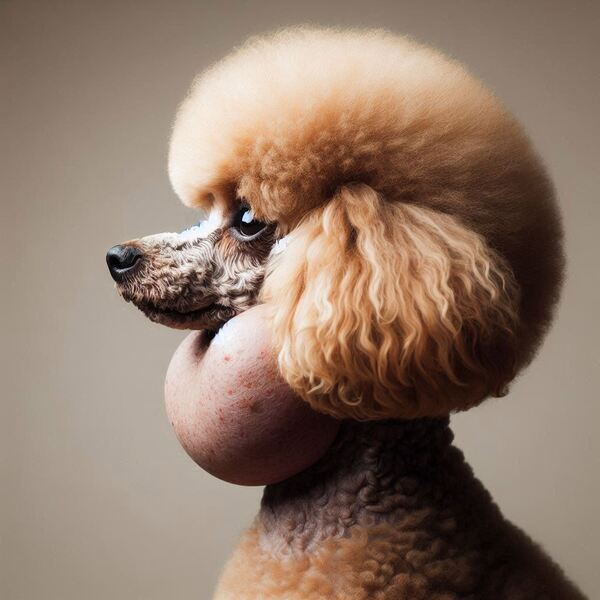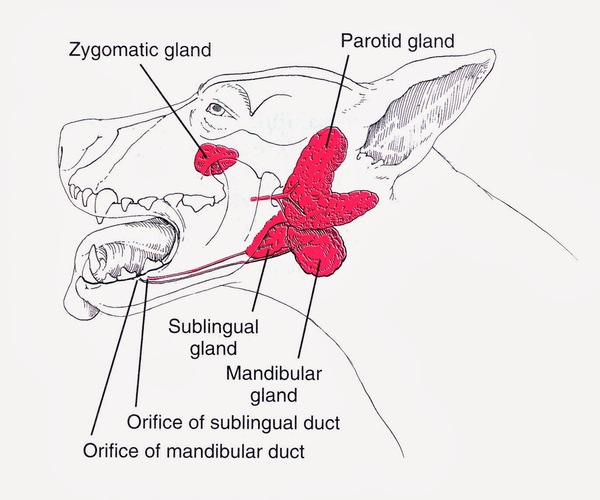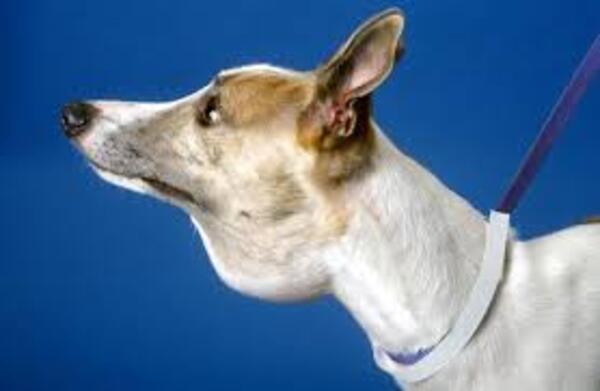A salivary mucocele in dogs is a relatively common condition where saliva accumulates in a sac-like structure outside of the salivary gland. This occurs when the duct that normally releases saliva is either blocked, ruptured, or damaged. While the condition may seem concerning, with proper care and treatment, most dogs can recover fully. In this article, we’ll discuss the causes, symptoms, diagnosis, treatment, and prevention of salivary mucoceles in dogs, and provide a thorough understanding of this condition.

A salivary mucocele is a collection of saliva that leaks out from a ruptured or blocked salivary duct and forms a cyst-like structure under the skin. Saliva, which is produced by salivary glands, should normally flow into the mouth through ducts. However, when these ducts become obstructed or damaged, saliva builds up in the surrounding tissue, creating a mucocele.
Several factors can lead to the development of a salivary mucocele. The most common causes include:
Trauma or Injury
Bites, scratches, or other injuries to the face or neck area can damage the salivary glands or ducts, leading to the leakage of saliva and the formation of a mucocele.
Salivary Duct Obstruction
Blockages in the ducts can prevent the normal flow of saliva, causing it to build up and form a cyst.
Infection or Inflammation
Infections or inflammation in the salivary glands can damage the tissue and cause leakage of saliva into the surrounding areas, leading to mucoceles.
Congenital Factors
In some cases, salivary mucoceles may be present at birth due to abnormal development of the salivary glands or ducts.

Recognizing the signs of a salivary mucocele early on can help in seeking prompt treatment for your dog. Common symptoms include:
Swelling or Lump
A soft, fluid-filled lump or swelling typically appears near the mouth, neck, or chin. The size of the lump may vary and can grow over time.
Excessive Drooling
Due to the malfunctioning salivary gland, dogs may start drooling excessively, particularly near the affected area.
Pain or Discomfort
The dog may show signs of discomfort or pain when the affected area is touched, especially if the mucocele is large or if it is pressing against other structures.
Difficulty Eating or Drinking
If the mucocele is located near the mouth, it may interfere with the dog’s ability to eat or drink comfortably.
If you suspect your dog has a salivary mucocele, it’s important to visit your veterinarian for a proper diagnosis. The diagnosis process typically involves the following:
Clinical Examination
The vet will perform a physical exam, checking for abnormal lumps or swelling around the dog's mouth, neck, or chin. They will also assess your dog’s overall health and look for other symptoms like excessive drooling.
Imaging Tests
The veterinarian may use imaging tests such as X-rays or ultrasound to determine the size, location, and extent of the mucocele. These tests help identify if the cyst has affected deeper structures.
Fine Needle Aspiration
In some cases, the veterinarian may perform a fine needle aspiration (FNA) to extract fluid from the mucocele. The fluid is then analyzed to confirm the diagnosis and rule out infection or other conditions.

Treating a salivary mucocele usually requires medical intervention, and the treatment options may vary based on the severity and location of the mucocele.
Surgical Removal
The most common and effective treatment for a salivary mucocele is surgery. During the surgery, the veterinarian will remove the affected salivary gland or duct and drain the mucocele. This procedure typically leads to a full recovery.
Drainage or Aspiration
If the mucocele is small, the vet may attempt to drain the cyst or aspirate the fluid. However, this method may not be as effective as surgical removal, and the mucocele can sometimes return.
Medications
If the mucocele is caused by infection or inflammation, the vet may prescribe antibiotics or anti-inflammatory medications to help manage the condition.
Follow-up Care
After treatment, your dog will need follow-up visits to ensure that the mucocele does not recur. The veterinarian will monitor the area for any signs of infection or regrowth.
There are different types of salivary mucoceles that can affect dogs, depending on the location of the affected salivary glands:
Cervical Mucocele
This type occurs in the neck region and is the most common form. It can cause noticeable swelling on the side of the neck.
Sublingual Mucocele
This type occurs under the tongue and can cause discomfort when the dog tries to eat or drink. It is less common than cervical mucoceles.
Pharyngeal Mucocele
This rare type affects the back of the throat and may cause difficulty swallowing or breathing.
With proper treatment, most dogs recover well from salivary mucoceles. The prognosis depends on the size and location of the mucocele, as well as the type of treatment your dog receives. Surgical removal often results in a full recovery with a low risk of recurrence. However, if the mucocele is not treated, it may continue to grow and cause pain or discomfort for your dog.
While it is not always possible to prevent salivary mucoceles, there are some steps you can take to reduce the risk:
Regular Oral Health Checks
Keep your dog’s mouth and teeth healthy by scheduling regular veterinary check-ups. Preventing infections or injuries to the salivary glands can reduce the chances of developing a mucocele.
Prevent Facial Trauma
Minimize your dog’s risk of facial injury by keeping them away from fights with other animals or rough play that could result in damage to the salivary glands.
Salivary mucoceles are a relatively common condition in dogs that can be managed effectively with the right treatment. By understanding the causes, symptoms, and treatment options, you can help your dog recover quickly and comfortably. Always consult your veterinarian if you notice any unusual swelling or discomfort in your dog’s mouth or neck area, as early detection and treatment are key to ensuring the best possible outcome for your furry friend.
We created this article in conjunction with AI technology, then made sure it was fact-checked and edited by a Animals Top editor.